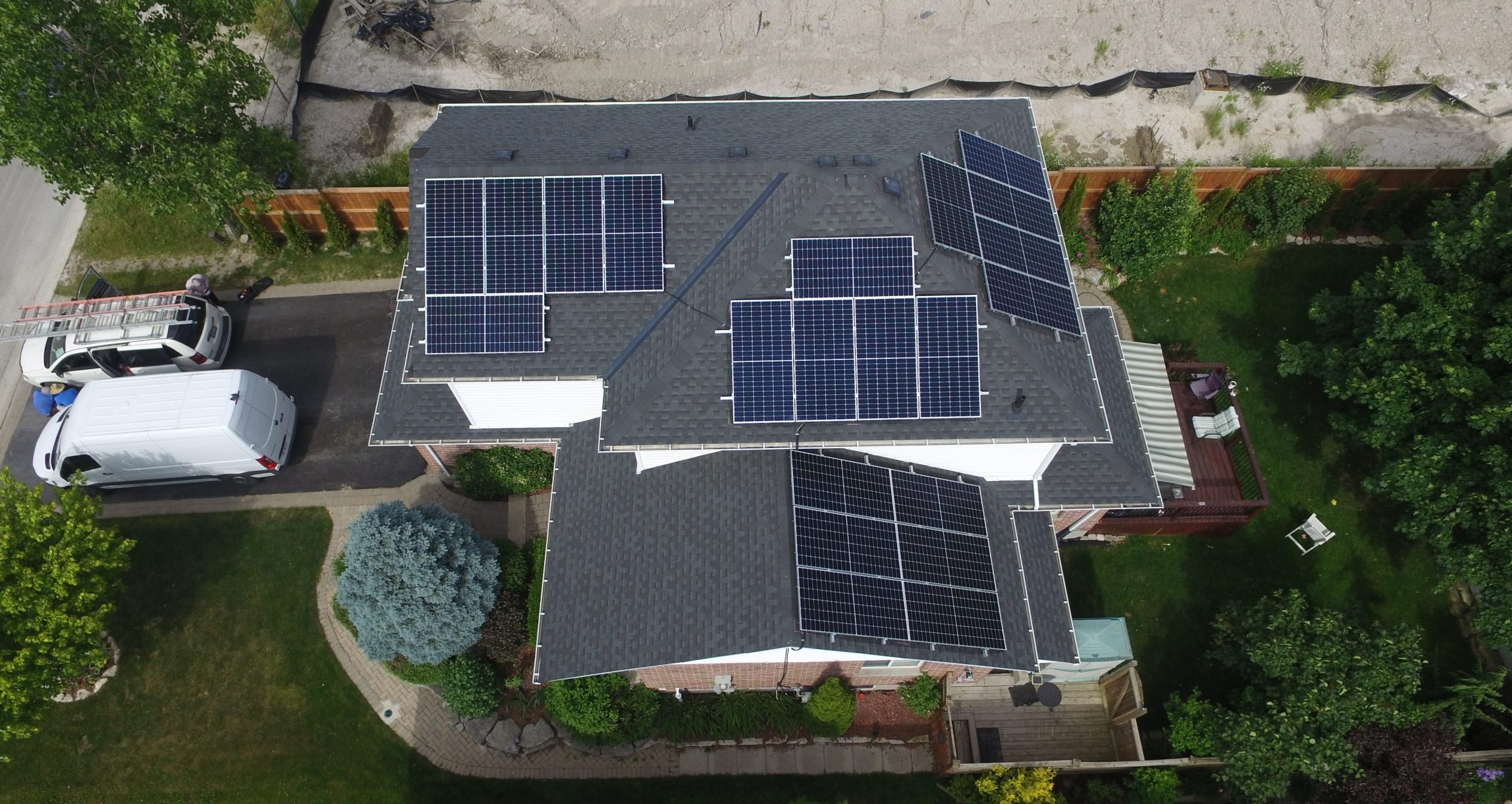Cost is probably one of the first things you want to consider before installing a new solar system. There are a lot of different factors any professional installer needs to look at before handing you that first quote. If you’d like a rough idea of how much a system in costs, we’ll walk you through how you can calculate that.
How Much Does Solar Cost?
Before we can find out how much your system will cost, we need to determine what system size is right for your home. If you’ve gone through our system sizing blog, you should have a very general idea of what system size you’ll need to cover your usage. Now we can use those numbers to figure out how much your potential solar system will cost. Please keep in mind these are very general numbers and it’s always best to have an installer or specialist give you a proper quote for more accurate numbers.
To calculate your system cost, simply multiply your system size by the average price per watt of your province. Energy hub has created an extremely helpful chart that showcases what the average is for each province. We’ll take a look at the average cost for the provinces we currently service using a 10kW system size as our example. All calculations are based on prices before any government rebates or incentives.
Referenced from: Cost of Solar Power In Canada 2021 (energyhub.org)
Ontario: Ontario has a very mature solar market and currently produces the most solar power out of all the provinces. Ontario is also a prime geographic location and is ranked as the 4th sunniest province in Canada.
The average price per watt for Ontario is $2.34-2.59. If you plan on installing a 10kW system, the price can range from $23400-25900
British Columbia: British Columbia has many natural wonders that we need to help preserve, and renewable energy is one of the best ways we can look after our planet for future generations. BC is also one of the most affordable provinces for solar in Canada.
The average price per watt for British Columbia is $2.54-2.69. If you plan on installing a 10kW system, the price can range from $25400-26900
Nova Scotia: Nova Scotia is one of the best provinces for installing solar panels and has one of the longest-lasting rebates for solar in Canada. The province has always actively supported renewable energy and is a leader in reducing greenhouse gas emissions.
The average price per watt for Nova Scotia is $2.74-3.35. If you plan on installing a 10kW system, the price can range from $27400-33500.
Prince Edward Island: Prince Edward Island offers one of the best incentives in Canada with a rebate of up to $10,000. This rebate can even be stacked along with the $5000 federal Canada Greener Homes Grant for up to $15,000 savings in total.
The average price per watt for Prince Edward Island is $2.73-3.33. If you plan on installing a 10kW system, the price can range from $27300-33000.
Alberta: Alberta is a great location for solar and is ranked as the second sunniest province in Canada.
The average price per watt for Alberta is $2.51-2.77. If you plan on installing a 10kW system, the price can range from $25100-27700.
Factors That Can Affect Total Solar System Cost
We want to emphasize that these numbers are very rough estimates based on the average price per watt of each province. We always recommend contacting your local installers for quotes so you can get a better idea of how much your system will cost. There are also many other factors that can affect how much your system will actually cost such as equipment and job difficulty.
Equipment: There are different types of equipment and brands you can choose from that ultimately affect your total cost. For instance, polycrystalline panels generally cost less than monocrystalline panels but don’t produce as well in low-light conditions. There are also different manufacturers offering varying product tiers so it’s important to be aware of the type of equipment you’re receiving.
Type of Job: Irregular roofs and conditions that require extra work can end up costing more money. Your system does not only include the cost of equipment but also labour costs, such as designing and installing your system.
Rebates and Incentives
Incentives can help reduce the cost of solar and alleviate some of the financial stress that comes with a big home upgrade. Incentives can come from the federal, provincial, or municipal level and is a great way to transition more homeowners toward renewable energy.
One of the most popular incentives out right now is the Canada Greener Homes Grant, a federal grant offering up to $5000 for eco-friendly upgrades such as solar. PEI and Nova Scotia also have their own provincial rebates.
Financing Options
Now that we’ve looked at the total cost, let’s dive into financing options. We understand it’s never fun having to empty your savings or bank account for a big purchase. Financing helps you avoid large upfront costs so you can comfortably enjoy the benefits of solar.
We’ve come up with an award-winning financing program that can go as low as 0%. How does this work? We simply divide your total system cost by the number of months in your financing term to calculate your monthly payment with us. Your financing term can range from 12-16 years depending on your province. After the government rebates, your savings should be enough to cover your monthly payment.
The Canadian government has also recently launched their own 0% Canada Greener Homes loan that offers a loan of up to $40,000 on a 10-year term.
Polaron Makes Solar Affordable and Easy
If you’re interested in going solar and want to take a closer look at how much your system will cost, we can definitely help. Contact us today and we can get you started with a free quote from one of our solar specialists and answer any questions you may have.
Sources:

